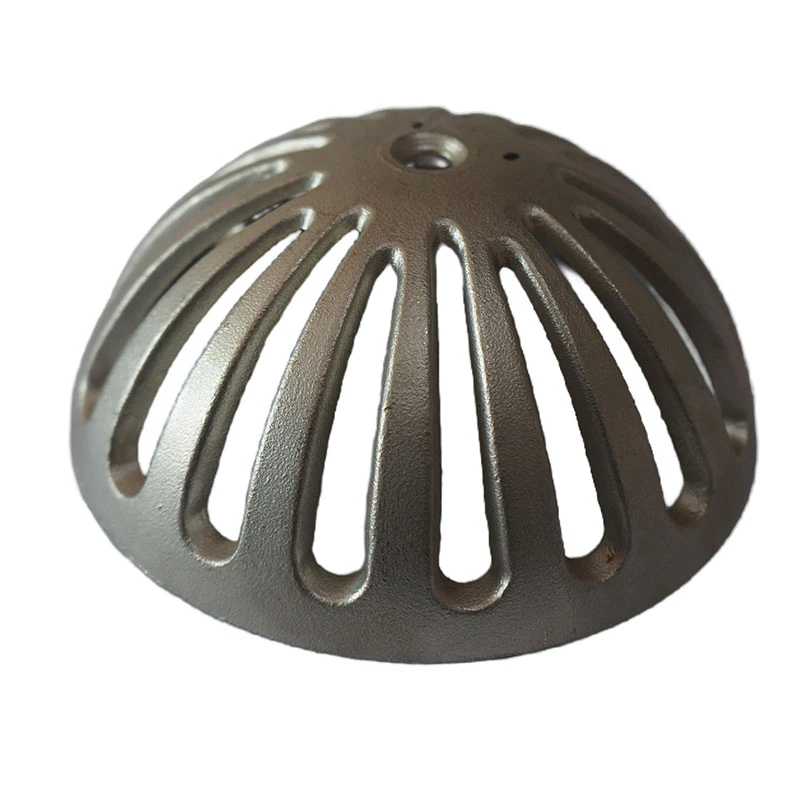what is metal stamping process
Understanding the Metal Stamping Process
Metal stamping is a manufacturing process that involves the shaping of metal sheets into specific designs and forms using various tools and machinery. This essential technique is widely used in industries ranging from automotive to electronics, owing to its precision, efficiency, and ability to produce high volumes of parts with uniform quality. In this article, we'll explore the metal stamping process, its applications, and the benefits it offers.
The Metal Stamping Process
The metal stamping process typically begins with metal sheets of predetermined thickness, which are fed into a stamping machine. The machine utilizes a die—a specialized tool equipped with a cavity that corresponds to the desired shape of the final product. This process can be broken down into several key stages blanking, piercing, bending, and forming.
1. Blanking This is the initial step in which flat metal sheets are cut into basic shapes, known as blanks. The blanking process pushes a punch through the metal sheet and removes the unnecessary sections. The resultant blanks can then be used in subsequent stamping operations.
2. Piercing After blanking, specific holes or cutouts might be required in the blank. This is achieved through the piercing process, which involves a punch and die that create openings in the metal. Piercing allows for the integration of features such as rivet holes, mounting points, or ventilation openings in the final product.
3. Bending Once the blanks are shaped and pierced, the next phase is bending. In this stage, the material is manipulated to create angles, curves, or folds. Bending can be achieved using various techniques, including air bending, bottoming, and coining, depending on the desired angle and material characteristics.
4. Forming The final shaping of the stamped part occurs here. Forming can involve more intricate designs, such as deep drawing, where the metal is pulled into a die to create hollow parts. This process is common in manufacturing components like automotive fuel tanks or cookware.
Applications of Metal Stamping
what is metal stamping process

Metal stamping finds a myriad of applications across multiple industries. The automotive sector heavily relies on stamping for producing a vast array of components, such as brackets, panels, and chassis parts. The electronics industry also benefits from metal stamping in creating housings for devices, connectors, and heat sinks.
Moreover, appliances, construction materials, and even consumer goods utilize stamped metal parts. Essentially, any industry that requires precise metal components can leverage metal stamping for its manufacturing needs.
Benefits of Metal Stamping
One of the key advantages of metal stamping is its ability to produce large quantities of parts quickly and efficiently, making it a highly cost-effective solution for manufacturers. Unlike other forming techniques, metal stamping often results in minimal material waste, which contributes to better sustainability in production processes.
Additionally, the precision achieved in metal stamping ensures that parts meet strict tolerances, reducing the need for extensive finishing work. This consistency in quality diminishes the likelihood of defects, which can save companies significant amounts of time and money in rework and scrap.
The versatility of metal stamping is another noteworthy benefit. With an array of materials—such as aluminum, steel, and copper—available, manufacturers can optimize their designs based on strength, weight, and corrosion resistance.
Conclusion
In conclusion, the metal stamping process is a crucial manufacturing technique that enables the efficient production of high-quality metal components used in various industries. The stages of blanking, piercing, bending, and forming combine to create intricate designs with precision and consistency. As industries continue to evolve, the demand for reliable and efficient manufacturing processes like metal stamping will undoubtedly grow, highlighting the importance of this technology in modern production.
-
OEM Sand Cast Pump Valve Fittings - Baoding Hairun Machinery And Equipment Trading Co., Ltd.NewsJul.31,2025
-
OEM Sand Cast Pump Valve Fittings - Baoding Hairun | Precision Engineering, CustomizableNewsJul.30,2025
-
OEM Sand Cast Pump Valve Fittings - Baoding Hairun Machinery And Equipment Trading Co., Ltd.NewsJul.30,2025
-
OEM Sand Cast Pump Valve Fittings - Baoding Hairun Machinery And Equipment Trading Co., Ltd.NewsJul.30,2025
-
OEM Sand Cast Pump Valve Fittings - Baoding Hairun Machinery|Precision Engineering&Fluid ControlNewsJul.30,2025
-
OEM Sand Cast Pump Valve Fittings - Baoding Hairun Machinery And Equipment Trading Co., Ltd.NewsJul.30,2025















